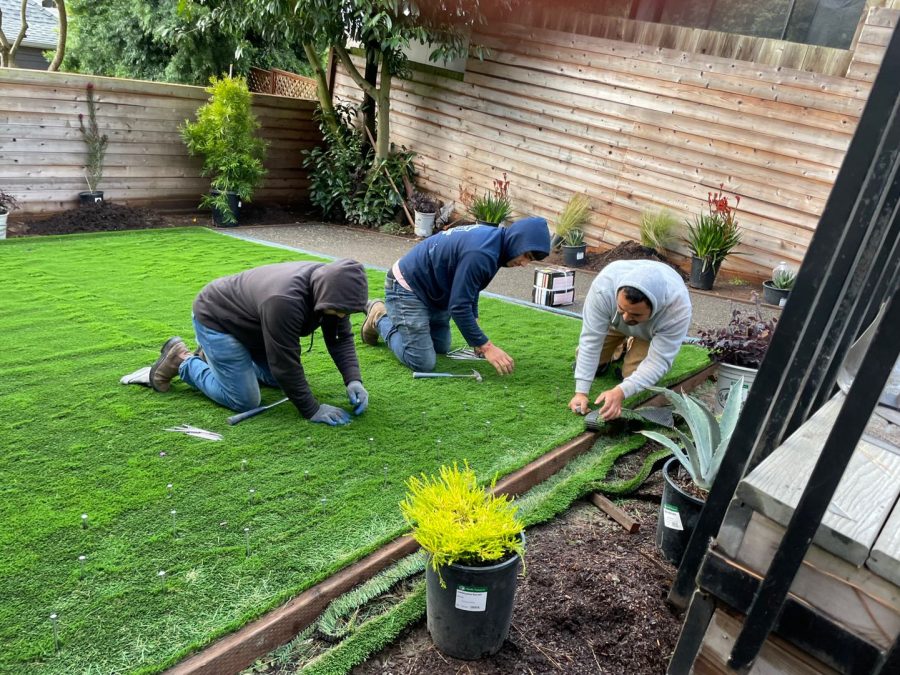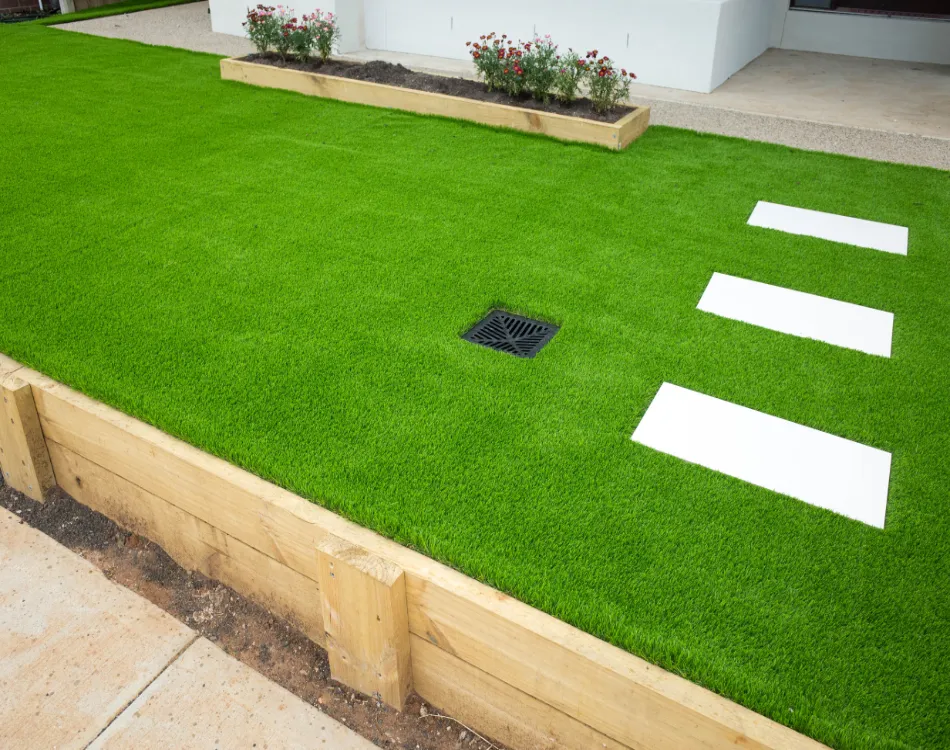Select Reputable Artificial Turf Companies Phoenix for High-Quality and Realistic Grass
Select Reputable Artificial Turf Companies Phoenix for High-Quality and Realistic Grass
Blog Article
Look Into the Environmental Perks of Opting for Artificial Grass Solutions
The fostering of synthetic grass solutions offers an engaging possibility to attend to pressing ecological difficulties. By considerably decreasing water usage and decreasing the application of dangerous chemicals, these choices not only promote sustainable landscape design yet likewise safeguard neighborhood ecological communities. The lower carbon impact associated with reduced maintenance tasks contributes to an extra sustainable technique to land management. Nonetheless, the ramifications of these advantages extend past mere preservation efforts, questioning regarding their lasting impact on environment conservation and overall eco-friendly balance. Exploring these measurements discloses a complex interplay worth thinking about.
Water Conservation Conveniences
One of the most significant benefits of fabricated grass is its ability to save water. In contrast, fabricated lawn does not need watering, significantly lowering the total need for water resources.
By removing the requirement for regular watering, synthetic grass contributes to lasting landscape practices and assists reduce the ecological effect of excessive water usage. The conservation of water expands to the reduction of drainage, which can lead to soil erosion and river pollution.
In addition, the installation of man-made lawn enables home owners and towns to designate water resources extra efficiently, concentrating on crucial uses such as alcohol consumption water and farming. The shift towards fabricated turf not only promotes accountable water use yet also lines up with wider ecological objectives targeted at preserving natural resources.
As communities significantly focus on sustainability, the water preservation benefits of synthetic grass provide an engaging situation for its fostering in household and industrial landscape design tasks.
Reduced Chemical Usage
The transition to synthetic grass considerably lowers the dependence on chemical therapies frequently made use of in natural lawn maintenance. Standard grass management commonly involves the application of chemicals, plant foods, and herbicides to advertise growth and control parasites. These chemicals can position threats to human health and wellness, neighborhood wildlife, and the atmosphere, adding to soil and water contamination.
On the other hand, synthetic grass eliminates the demand for these hazardous materials. As soon as set up, it needs minimal maintenance, mainly being composed of regular cleaning and irregular infill replenishment. This reduction in chemical usage not only benefits the instant environment yet additionally adds to wider eco-friendly stability. By decreasing the launch of synthetic substances into the community, synthetic grass promotes healthier dirt and water systems.
Furthermore, the lack of chemical drainage related to artificial grass setups helps shield local waterways from air pollution, supporting marine life and keeping biodiversity. Phoenix turf companies. As areas increasingly focus on sustainable practices, opting for synthetic turf provides a viable option that aligns with environmental preservation goals. Through this change, residential property owners can enjoy lavish eco-friendly rooms without compromising environmental health, leading the method for a much more lasting future
Reduced Carbon Footprint

In addition, the setup of synthetic grass can lead to substantial water preservation. Natural lawns require considerable quantities of water for watering, which not only contributes to the carbon impact related to water removal and therapy but also strains neighborhood water sources. On the other hand, fabricated lawn requires very little upkeep, requiring no watering, consequently dramatically minimizing water use and its associated energy expenses.
Additionally, the durability of man-made lawn adds to its decreased carbon impact. With a life-span of approximately 15 years or even more, the need for constant substitutes is lessened, resulting in much less waste and lower energy consumption in manufacturing and dealing article with typical yard choices. Overall, synthetic grass provides a lasting choice for eco conscious landscape design.
Environment Preservation
Environment preservation is an essential factor to consider in the argument over landscape design choices, especially when comparing synthetic grass to natural grass. All-natural yard yards usually call for extensive upkeep, consisting of using chemicals, fertilizers, and herbicides, which can adversely affect local communities. These chemicals can leach into the soil and waterways, damaging native vegetation and animals and interfering with regional environments.
Artificial lawn eliminates the need for dangerous chemicals, therefore shielding neighboring wild animals and keeping the honesty of bordering ecological communities. The setup of fabricated lawn can lead to the conversion of previous yard locations into more biodiverse landscapes, such as pollinator gardens or indigenous plant locations, which can sustain neighborhood wild animals.
Ultimately, the transition to synthetic turf not only conserves water and decreases maintenance initiatives yet likewise cultivates a much more harmonious relationship in between human activities and the natural surroundings, promoting environment conservation while doing so.
Long-Term Sustainability
Long-lasting sustainability is a vital aspect in examining the advantages of artificial grass over conventional turf yards. Among the most considerable benefits of synthetic grass is its longevity; it can last as much as 15-20 years with minimal upkeep, whereas natural grass calls for regular reseeding and substitute. This durability decreases the demand for continuous sources, such as water, plant foods, and pesticides, which are essential for keeping a healthy grass yard.
Furthermore, synthetic grass contributes to a reduction in carbon emissions connected with lawn treatment devices. Conventional lawns usually need gas-powered lawn mowers, leaners, and blowers, all of which add to air pollution. Arizona artificial turf. In contrast, artificial turf removes the need for such devices, advertising a cleaner atmosphere
Furthermore, the manufacturing of fabricated lawn increasingly makes use of recycled materials, improving its sustainability account. As manufacturers take on eco-friendly methods, the ecological impact of synthetic grass continues to lessen.

Verdict
The adoption of fabricated find more info grass services offers considerable ecological advantages, consisting of considerable water conservation, minimized reliance on damaging chemicals, and a lower carbon impact. Additionally, artificial grass aids in preserving all-natural habitats by decreasing land disturbance and advertising lasting sustainability via using sturdy materials. Jointly, these elements underscore the capacity of synthetic grass to contribute favorably to ecological wellness and use a sensible option to conventional landscaping methods in a significantly resource-conscious world.
In contrast, synthetic grass does not need watering, significantly decreasing the general need for water resources. By decreasing the launch of synthetic compounds into the ecological community, synthetic grass advertises much healthier dirt and water systems.
Furthermore, the setup of fabricated turf can result in significant water preservation. In comparison, artificial grass needs marginal maintenance, needing no watering, thus substantially reducing water usage and its connected power costs.

Report this page